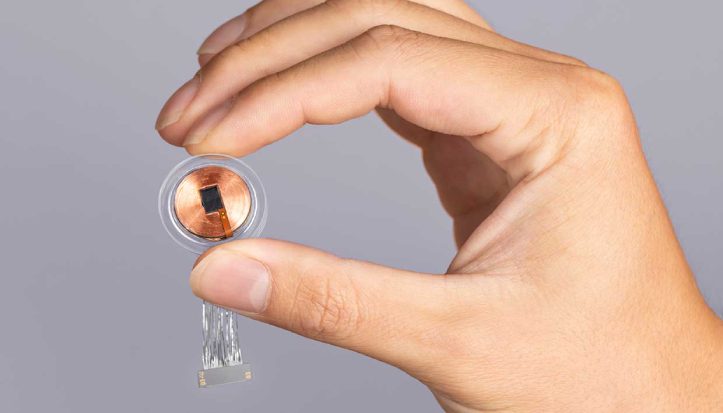No time to read? Take a quick listen on a coffee break ! ( Choose 1.5x to increase speed )
As we stand on the brink of a new era, the future of humans and AI is more exciting than ever. Many fear losing jobs to AI, but what if you could enhance your intelligence through technology? Enter Elon Musk’s brain chip – Neuralink.
This groundbreaking venture aims to merge human minds with AI, potentially allowing us to match or even surpass computer intelligence. Curious about how this could work? Let’s explore the fascinating fusion of biology and technology in “How Does Neuralink Work.”
Table of Contents
- The Back Story of Neuralink
- What Is Neuralink Chip Made of?
- How Does the Neuralink Implant Take Place?
- How Does Neuralink Work?
- How Does Neuralink Work with the Brain?
- Neuralink’s first-ever trial
- Neuralink Human Trial
- Scenes After Human Trial
- Potential Applications and Benefits
- Challenges and Risks Associated
- Looking Ahead: The Future of Neuralink
- Frequently Asked Questions
The Back Story of Neuralink
Neuralink, founded in 2016 by Elon Musk, aims to revolutionize human-computer interaction. The neurotechnology company seeks to create a brain-computer interface (BCI) that translates thoughts into actions. During a revealing discussion on the Joe Rogan Podcast, Musk shared the intriguing backstory behind Neuralink.
He expressed concerns about the slow interface speed between the human brain and computing devices, noting that using our thumbs on smartphones is much slower than a computer’s processing capabilities. Musk’s vision for Neuralink was driven by the desire to overcome this roadblock, developing a high-bandwidth, direct brain-to-computer interface to enhance human cognition and seamlessly integrate with advancing technology.
What Is Neuralink Chip Made of?
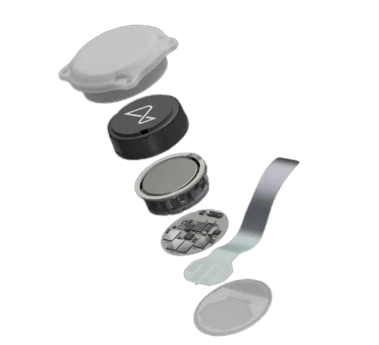
The Neuralink chip consists of several advanced components, each designed to interact seamlessly with the human brain:
1. Biocompatible Enclosure
The implant is protected by a hermetically sealed, biocompatible enclosure that is robust enough to endure physiological conditions far harsher than those typically found within the human body.
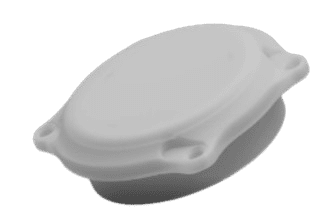
2. Battery
Powering the N1 Implant is a small, wirelessly charged battery. This allows for convenient recharging from outside the body using a compact, inductive charger.
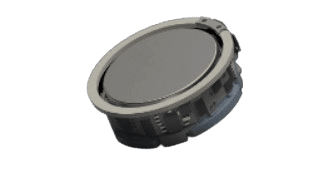
3. Chips and Electronics
The device includes custom, low-power chips and sophisticated electronics that process and wirelessly transmit neural signals to an application that decodes these signals into specific actions and intents.

4. Threads
To capture neural activity, the implant utilizes 1024 electrodes distributed over 64 ultra-thin, highly flexible threads. These threads are designed to minimize damage to brain tissue during and after implantation.
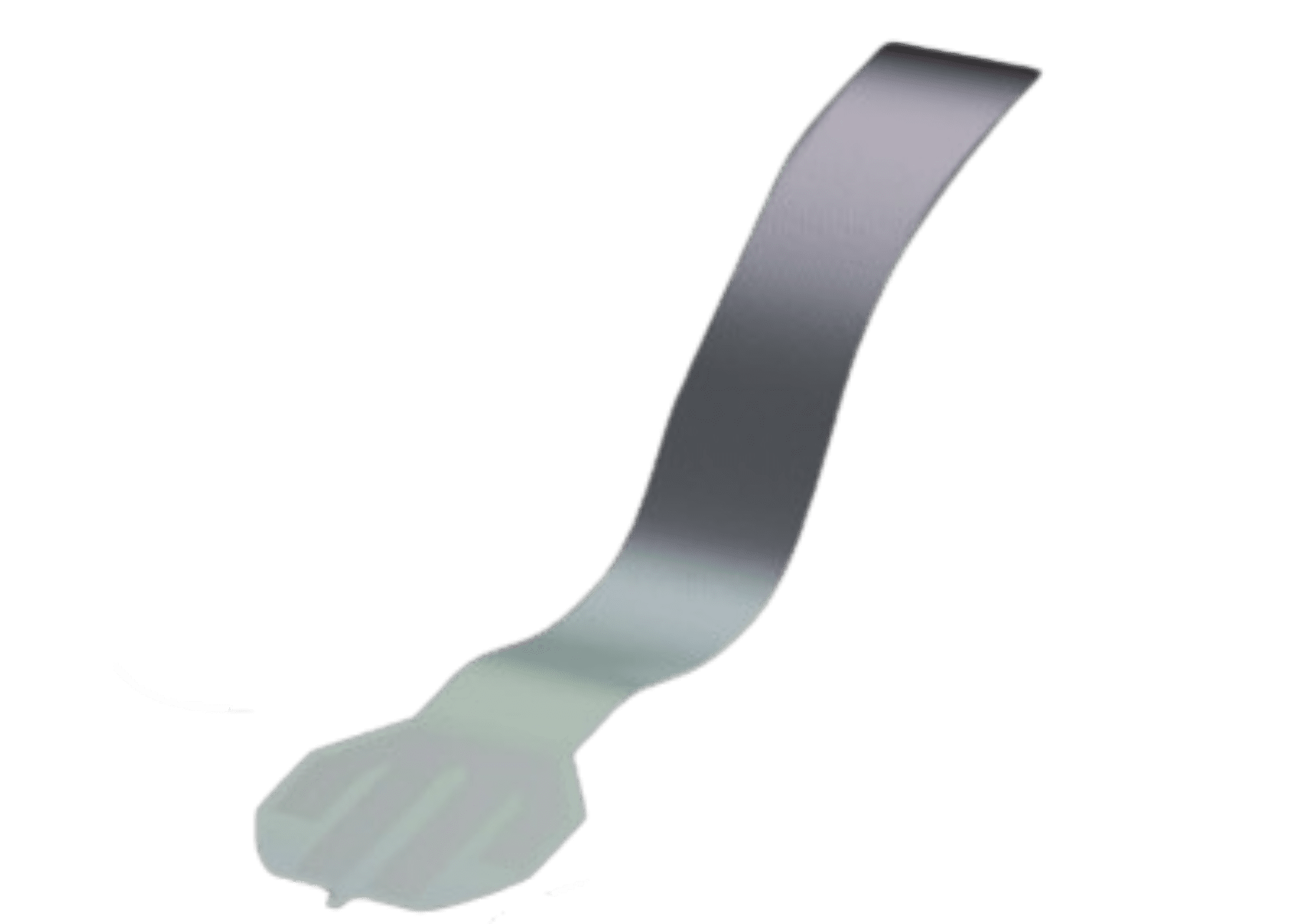
How Does the Neuralink Implant Take Place?
The Neuralink implant is placed using a highly specialized surgical robot due to the delicate nature of the procedure. This robot is equipped to handle the ultra-thin, flexible threads that contain electrodes. These threads are inserted into the brain with precision to minimize tissue damage and ensure accurate placement. The robot uses advanced optics and sensors to guide the insertion process. Here’s what the surgical robot looks like:
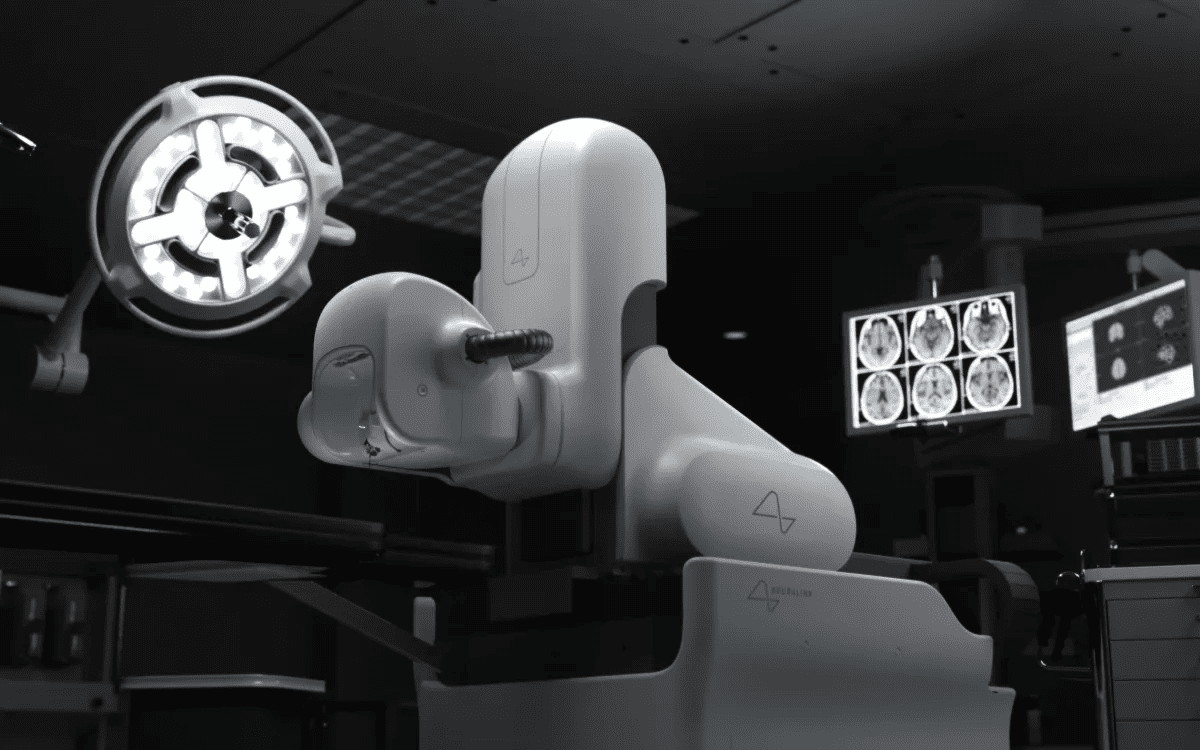
Implantation Process
Preparation: The patient’s head is cleaned and positioned for surgery to ensure safety and accuracy.
Mapping: A surgical robot uses advanced imaging to map the brain, identifying the best spots for electrode placement.
Implantation: The robot delicately inserts thin, flexible threads with electrodes into the brain, minimizing tissue damage.
Connection: Electrodes are connected to the Neuralink device, which is wirelessly charged and encased in biocompatible material.
Testing and Calibration: The device is tested and adjusted to ensure it communicates properly with the Neuralink app.
Closure and Recovery: The surgical site is closed, and the patient’s recovery and implant functionality are monitored.
How Does Neuralink Work?
To understand the workings of Neuralink, let’s zoom into a specific part of the brain: the motor cortex.
Motor Cortex Basics:
This part of the brain is crucial for planning and executing movements.
It’s mapped directly to various body parts but in a flipped and mirrored layout—meaning the right side of the body is controlled by the left side of the brain, and vice versa.
Interestingly, the map isn’t proportional; the hands and face occupy more space than other parts, highlighting their importance in our interactions.
Neural Activity and Movement:
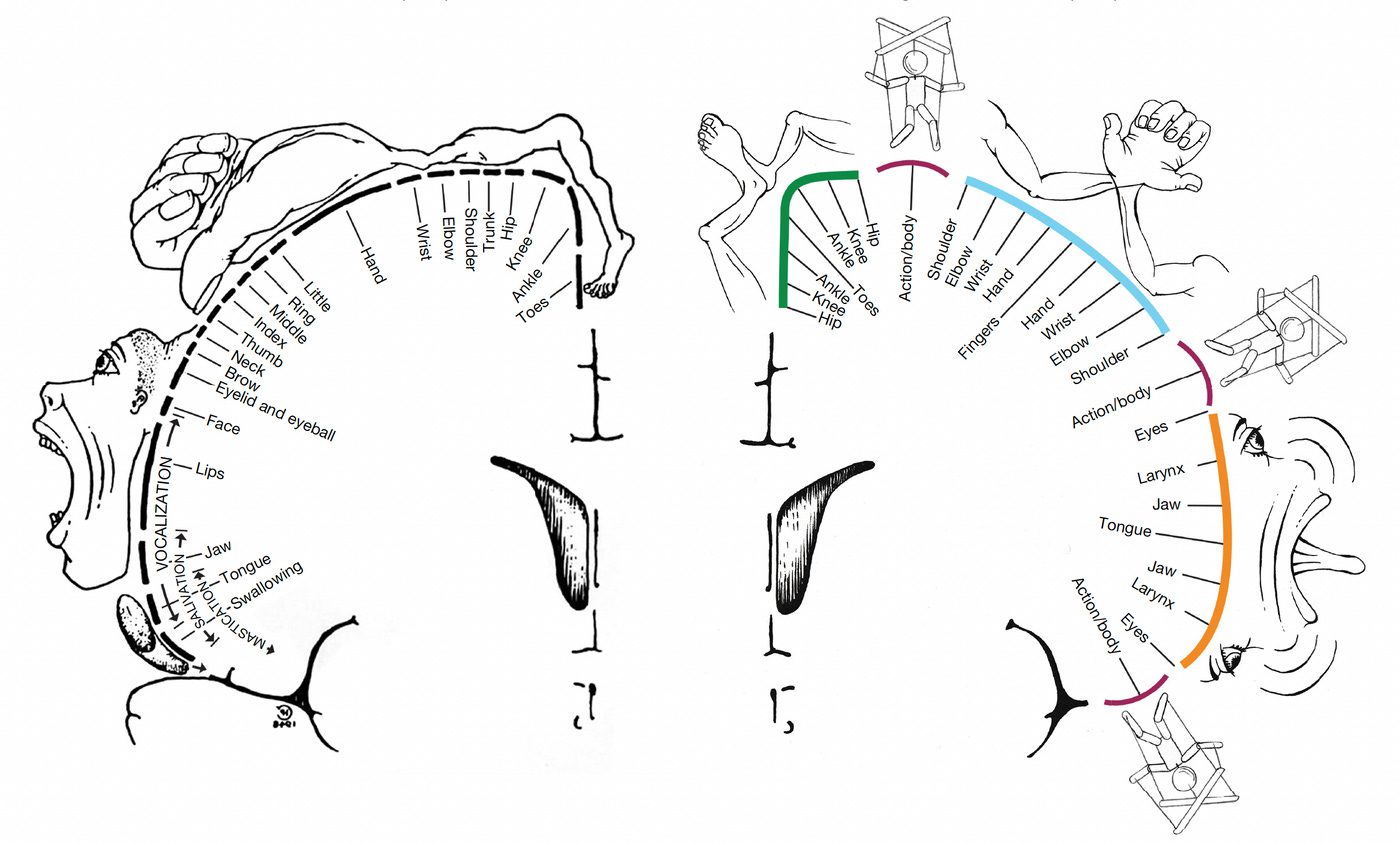
When you move your right thumb, neurons in a specific part of your left motor cortex kick into high gear, changing their firing patterns even before you move it.
Hence, when we plan to move a body part, neurons in the motor cortex change their firing rate, even when just thinking about movement. This change allows researchers to detect neuron spikes, as Elon Musk mentioned, by reading the firing rates of neurons near implanted electrodes. This technology could potentially assist in tasks like controlling prosthetic limbs.
How Does Neuralink Work?
Neuralink works by interacting directly with the neurons in the brain, which are essentially tiny electrical devices. Here’s a step-by-step explanation:
1. Neuron Communication:
Neurons in the brain communicate using chemical signals called neurotransmitters and electrical signals known as action potentials. This communication is essential for brain functions like visual processing, memory retrieval, and language.
2. Neuralink Threads:
Neuralink uses ultra-thin, flexible threads that are surgically inserted into specific areas of the brain. These threads are placed alongside neurons and can detect the tiny electrical signals that neurons use to communicate.
Here’s a closer look into the insertion process into an agarose brain proxy; performed before the trials. Image source: JMIR Publications
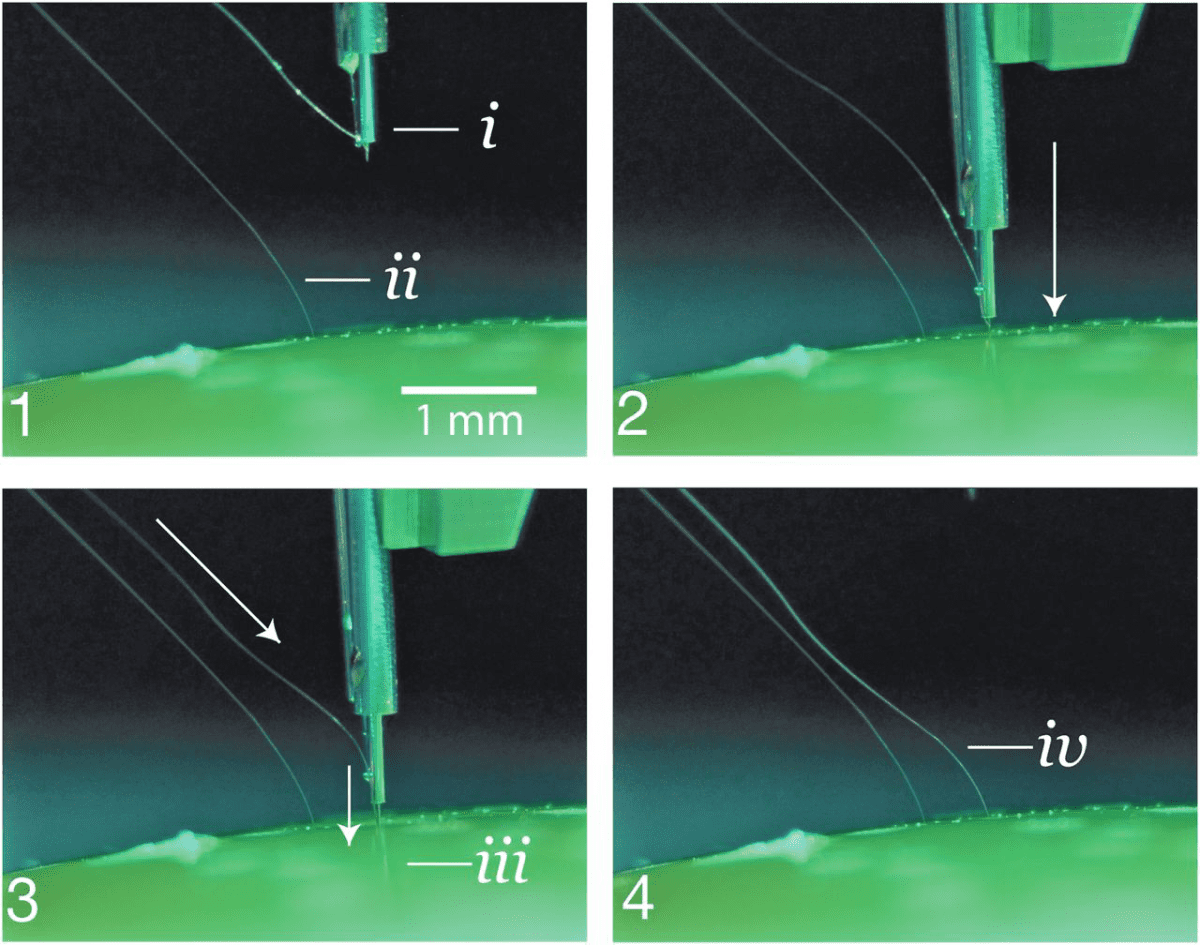
3. Signal Processing:
The electrical signals detected by the threads are amplified and digitized by the Neuralink chip. This makes the signals easier to read and analyze.
Here’s an image of The broadband signals recorded from a representative thread. Image Source JMIR Publications
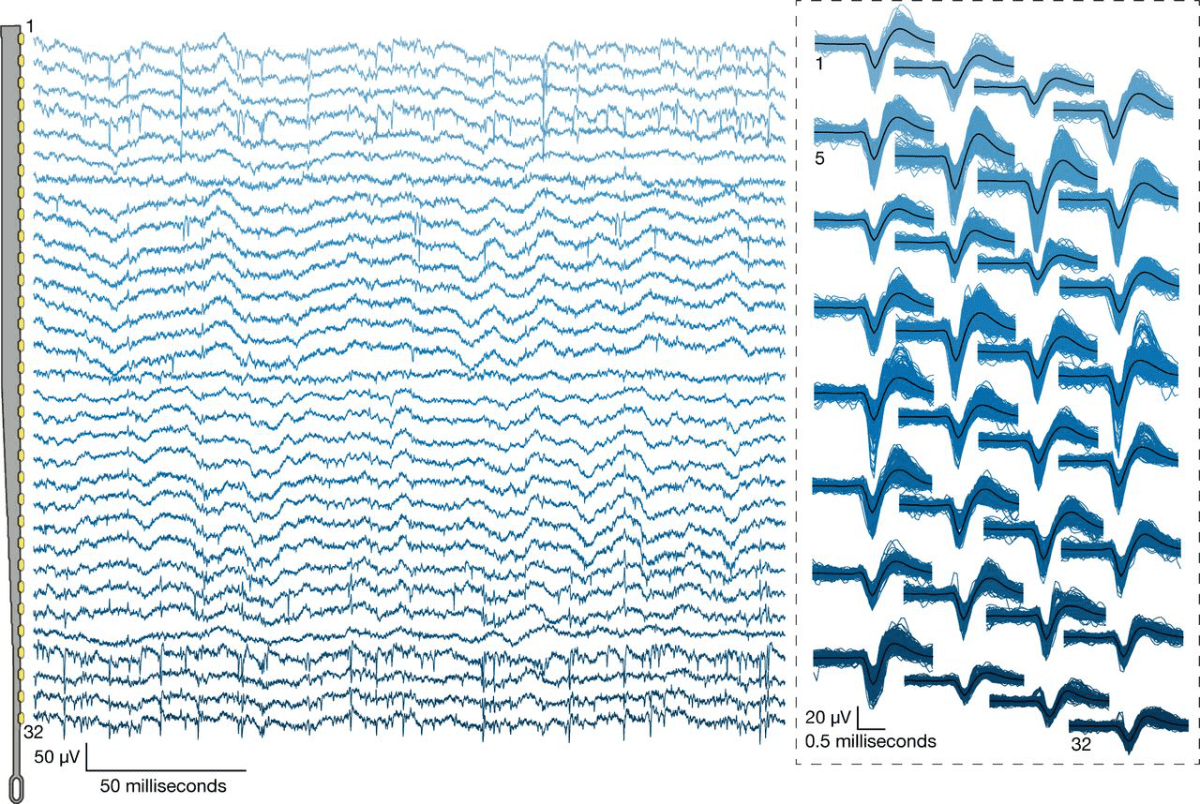
4. Data Transmission:
The digitized data from the chip is transmitted wirelessly to a computer up to 10 meters away. This creates a direct link between the brain and external devices, allowing for real-time data processing and interaction.
5. Learning and Calibration:
Neuralink requires an initial calibration period. During this time, the system records neural activity while the user performs tasks or thinks about specific actions. Mathematical models then identify correlations between brain activity and the intended actions, allowing the system to adapt to the user’s unique neural patterns.
By placing neural threads alongside neurons and decoding their signals, Neuralink enables a direct connection between the brain and external devices. This technology has the potential to revolutionize medical treatments and enhance human-computer interactions.
Here’s a simplified illustration of Neuralink’s Interaction with the brain:
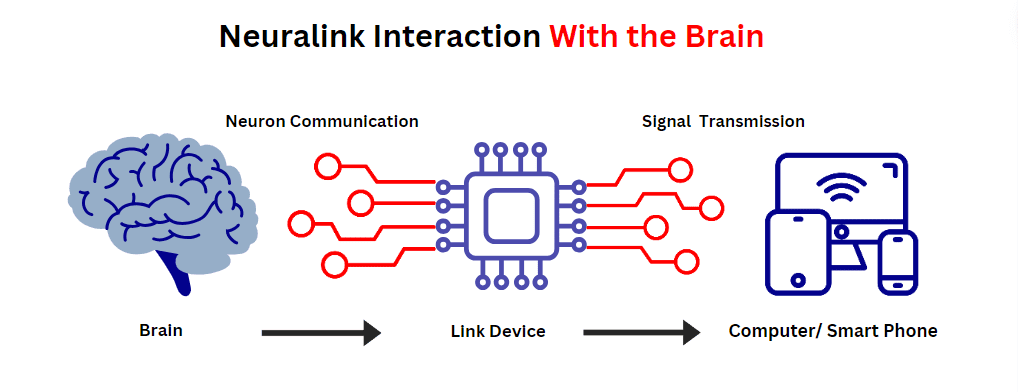
Neuralink’s First-Ever Trial:
Pig: On August 28, 2020, Elon Musk demonstrated Neuralink’s brain-computer interface using a pig named Gertrude. The device, implanted in Gertrude’s brain, monitored and displayed real-time neural activity as she interacted with her environment. Here’s an image demonstrating the brain activity of the pig
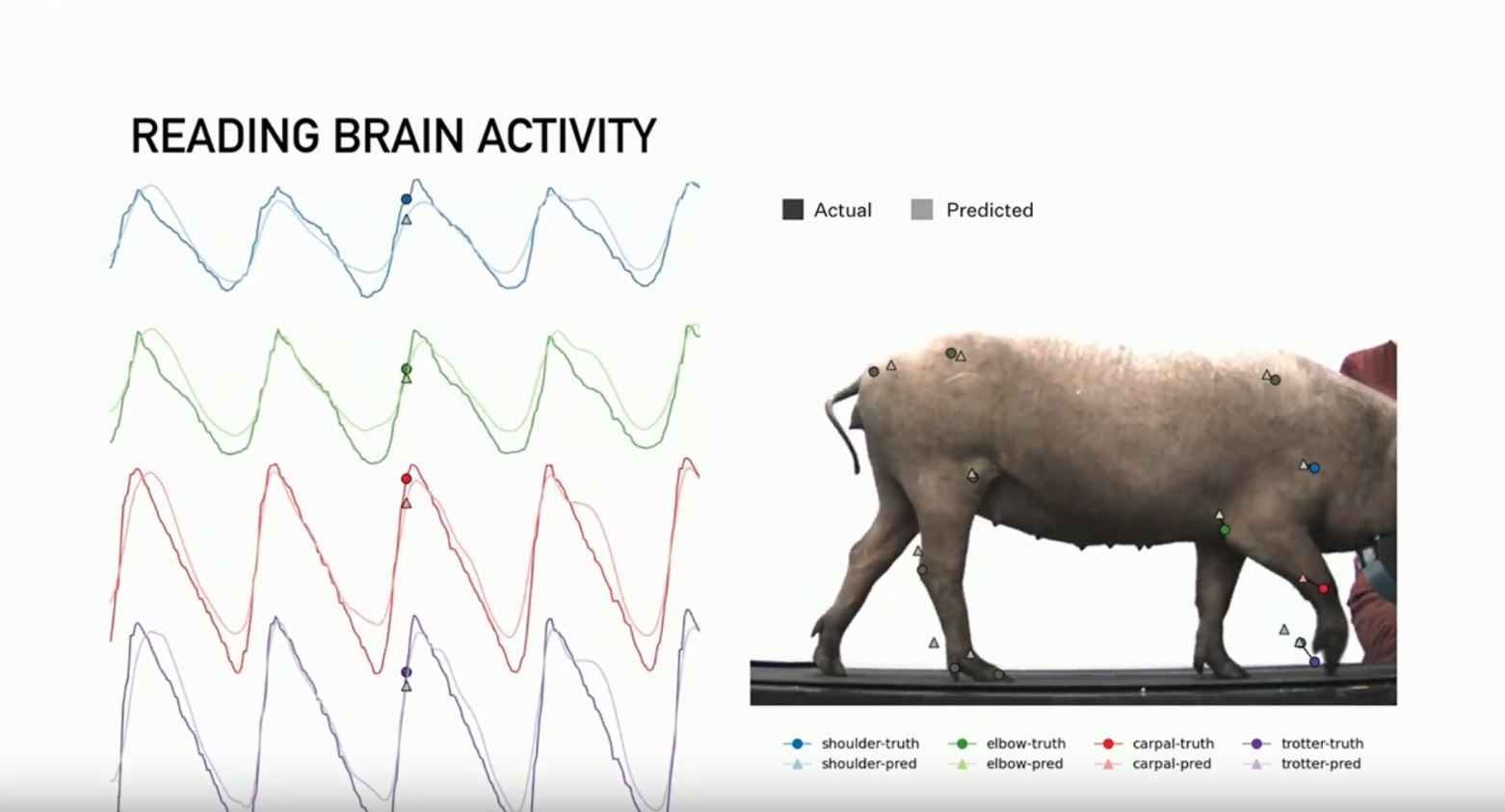
Reading Brain Activity of Pig
Monkey: In less than a year, the Neuralink N1 chip was fitted in the brain of a macaque monkey, the electrodes in the chip were able to detect and record the neural activity associated with the physical manipulation of a joystick during the ping-pong game. As the monkey learned to play the game using the joystick, the N1 chip recorded the specific brain signals linked to these motor actions.
Eventually, these signals could be used to predict and replicate the joystick movements without the need for physical manipulation, effectively allowing the monkey to control the game directly through thought.

Neuralink’s test on monkey: live stream
Process Simplified:
Before Neuralink: Brain → Hand → Joystick → Paddle
With Neuralink: Brain → Decoder → Paddle
Neuralink Human Trial
The first Neuralink implant trial marked a significant milestone. On May 25, 2023, Neuralink received clearance from the U.S. Food and Drug Administration for an in-human clinical trial. On January 28, 2024, 29-year-old quadriplegic Noland Arbaugh was implanted with the Neuralink device.
The trial aimed to demonstrate the device’s ability to control computer functions via thought, enhancing Arbaugh’s quality of life. He reported significant improvements, such as playing video games and chess directly with his brain, showcasing the technology’s potential therapeutic benefits for individuals with severe spinal injuries. Here’s a link to the live video shared by the company recently.
In less than a year, Neuralink achieved its new feat of a very successful second human implant on a patient named Alex, a former automotive technician who suffered a spinal cord injury. Read ahead to find their implant stories.
Scenes After Human Trial
Let’s dive into the aftermath of Neuralink’s human trials and explore the impact on the brain and the subsequent improvements.
On May 8, 2024, Neuralink’s official blog site released an article updating the user experience and progress of the Neuralink chip implant. The PRIME Study (Precise Robotically Implanted Brain-Computer Interface), a clinical trial initiated by Neuralink, aims to evaluate the safety and efficacy of its BCI technology in humans.
This study monitors the chip’s technical performance remotely and measures its benefits by timing the duration of independent use and assessing its impact on participants’ quality of life.
Neuralink PRIME Study: Journey and Achievements of Neuralink Patients
1st Patient: Noland
Noland had initial doubts and questions about how does Neuralink work, especially given the groundbreaking nature of the technology. Like many people, he was curious about the safety, functionality, and real-life applications of the Neuralink implant. However, after undergoing the surgery and experiencing the implant’s capabilities firsthand, Noland’s doubts were significantly reduced. Soon after the surgery was successful, Noland was able to go home the following day. His biggest thanksgiving to PRIME Study was that he hadn’t been able to do things for 8 years and now doesn’t know where to allocate his attention.
Before getting the Neuralink implant:
Noland used a mouth stick to control a tablet. This stick was held in his mouth and placed by a caregiver. However, he could only use it while sitting upright, and using it for a long time caused discomfort, muscle fatigue, and pressure sores. Plus, it made speaking difficult.
After getting the Implant:
“The biggest thing with comfort is that I can lie in my bed and use [the Link]. Any other assistive technology had to have someone else help or have me sit up. Sitting causes stress mentally and on my body which would give me pressure sores or spasms. It lets me live on my own time, not needing to have someone adjust me, etc. throughout the day.”
— Noland Arbaugh, PRIME Study participant
Since the surgery, Noland has used the Neuralink implant to control his laptop and gaming console with his mind, even while lying down. He now plays games, browses the internet, and uses various apps effortlessly. He now also has his own Twitter profile where he livestreams to the whole world & plays games with the help of Neuralink.


“[The Link] has helped me reconnect with the world, my friends, and my family. It’s given me the ability to do things on my own again without needing my family at all hours of the day and night.”
— Noland Arbaugh, PRIME Study participant
Noland uses the Link to play games and control his computer: Plays Mario Kart and Chess (Top to Bottom)
2nd Patient: Alex
Alex’s experience with Neuralink involves:
1. Moving the Cursor: Within just 5 minutes of connecting to the Neuralink device, Alex could move a computer cursor. He even broke the world record for BCI cursor control on his first day, similar to our first participant.
2. Regaining Building capabilities
“Taking an idea, putting it as a design, and having a physical item as a finished product makes me feel like I’m building things again.”
— Alex, PRIME Study participant
Alex designed a 3D-printed charger mount using the Link, rekindling his passion for creating physical objects.

To the right of Alex’s laptop is a 3D-printed charger mount that he designed using his Link.
3. No thread retraction- The implant’s stability was demonstrated by the absence of thread retraction, showing the device’s reliability. To reduce the probability of thread retraction in the second participant, Neuralink implemented a number of mitigations, including reducing brain motion during the surgery and reducing the gap between the implant and the surface of the brain.
The Neuralink team on the other hand is planning to complete 10 Neuralink implants by the end of 2024. Musk’s long-term vision is mainly AI-human symbiosis and potentially providing superpowers to humans.
source: Neuralink Prime Study
BCI Use and Improvements
Research and Personal Use:
- Up to 8 hours per day for research sessions on weekdays.
- Over 10 hours per day for personal use on weekends.
- Recently, used the BCI device for 69 hours in one week (35 hours for research, 34 hours for personal use).
After Neuralinks’ second implant:
- On the first day of use, the patient broke the previous world record for cursor control using brain-computer interfaces.
- The patient has used the device for up to 70 hours a week.
BCI Performance and Challenges
World Record in Cursor Control:


Image: Top to Bottom (Daily Hours of BCI Use)
- Bar chart comparing daily hours of BCI research sessions (blue) and independent use (orange).
- Shows variability in usage, typically between 6 to 8 hours daily, with peaks up to 14 hours.
(Daily Peak BCI Performance)
- Bar chart showing daily peak BCI performance in bits per second (BPS).
- Displays initial improvement, followed by a dip, and then consistent recovery to around 8 BPS.
Potential Applications and Benefits
Think about it: Can you visualize a situation in which individuals with spinal cord injuries can direct their prosthetic limbs or use their phones just by thinking? This is the kind of future that Brain-Computer Interface (BCI) technology from Neuralink could make possible. Here is what could happen with Neuralink:
- Medical Wonders
- Neuralink aims to restore independence for people with disabilities by managing conditions like depression and anxiety through real-time brain monitoring. They also explore enhancing or restoring memory for those with Alzheimer’s and dementia.
- Entertainment
- Imagine seamlessly merging your thoughts with digital worlds, experiencing virtual and augmented reality like never before.
- Education
- Memory enhancement could make learning more immersive and interactive, improving concentration and information processing.
- Communication
- Telepathy could become a reality with brain-to-brain communication enabled by Neuralink and similar technologies.
Challenges and Risks Associated
- Brain Injury or Infection
- Implantation may damage sensitive brain tissue, causing serious complications or infections, and possibly increasing the risk of neurodegenerative diseases.
- Abuse and Misapplication
- BCIs could be misused for control or surveillance by governments or corporations, raising ethical and security concerns.
- Uncertain Long-Term Effects
- Long-term health and psychological impacts are not well understood and could be negative.
- Privacy Invasion
- Neuralink could access thoughts and memories, risking personal privacy and enabling covert surveillance.
- Negative Psychological Effects
- Dependency on BCIs might lead to addiction or feelings of inadequacy when not using the technology.
- Economic and Technical Challenges
- High costs could limit accessibility, and BCIs might be difficult to repair or remove without causing further complications.
Another real-world application was Alex using CAD software for designing. Click here to check out his designs made with Neuralink chip.
Looking Ahead: The Future of Neuralink
Neuralink is still in its infancy, but it’s making progress. The company has run its first human trial and already introduced a product called “Telepathy,” which enables users to control devices with their minds. Neuralink’s upcoming product for vision restoration is called “Blindsight.” It aims to give users some sight, even if it starts with low resolution like early video games. Here’s what could be next:
Grow the network – Look for broader clinical trials involving more patients and conditions. Expect device performance and features to improve as Neuralink creates new applications and partnerships.
Make it universal – Ultimately, they want to develop a BCI that works with any technology or brain region — one that is available to everyone at an affordable cost.
As we embrace a new era, Neuralink’s groundbreaking technology promises to merge human intelligence with computers, creating exciting possibilities. Understanding “How does Neuralink work?” showcases its potential to enhance cognition, treat neurological disorders, and restore lost functions. By seamlessly integrating our brains with technology, Neuralink aims to overcome current limitations, paving the way for a harmonious blend of biology and machines. Elon Musk’s visionary project redefines human capabilities, blurring the lines between man and machine.
Frequently Asked Questions
1. What is Neuralink trying to achieve?
Neuralink aims to enable communication between the human brain and computers, enhancing brain capabilities and offering solutions for various neurological disorders.
2. How does Neuralink’s technology work?
Neuralink uses ultra-thin threads with electrodes that are implanted in the brain to transmit and receive electrical signals to and from a computer.
3. What progress has Neuralink made in its development?
Neuralink has conducted animal trials successfully, demonstrating the capability of subjects to interact with computers using their thoughts.
4. Is Neuralink safe?
Safety trials are ongoing. While initial tests show promise, comprehensive human trials are needed to establish safety and efficacy fully.
5. What ethical concerns does Neuralink raise?
The technology could raise issues related to privacy, consent, and the long-term effects on human cognition and society.
6. Does Neuralink make you smarter?
No, Neuralink does not make you smarter. It aims to develop brain-computer interfaces that could potentially enhance brain functions and treat neurological conditions.
7. How much does Neuralink cost?
Neuralink’s price isn’t official yet but estimates range from $10,500 for the implant to $40,000 including surgery and exams.
Since you have stayed this long, we feel this might interest you!


